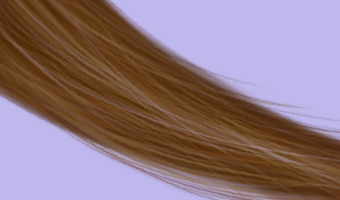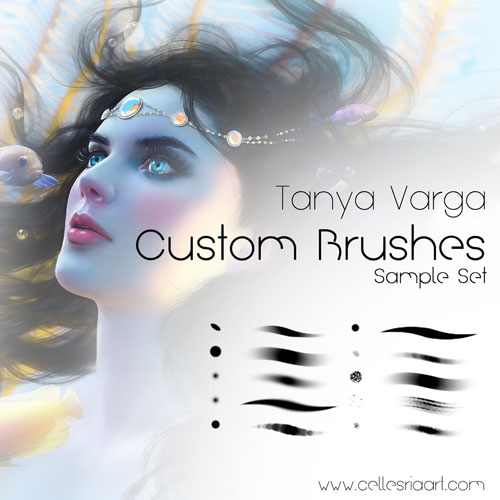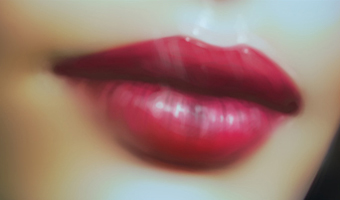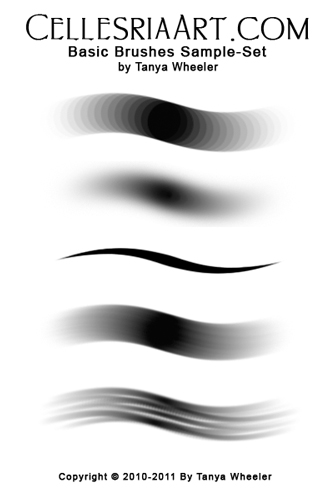Basic Hair painting Steps
Introduction
This is a basic step-by-step process for painting hair. There are many ways to paint hair such as using custom brushes and textures to add additional realism but for this process I am going to use a very basic technique using only 3 different brushes. A basic hard-edged round for blocking, a custom spotted brush and a small hard-edged round for painting individual strands.

1.
Color Scheme
Before I start I first create a color scheme for which I will be using throughout the painting. The basic hair color is a warm cinnamon brown color so my color scheme consists of the basic hair color along with a dark warm shadow tone, some neutral mid-tones and a light violet color for the highlight.

2. Form Blocking
First I start with the largest brush a basic hard-edged round for blocking in the basic hair shape. For this I always start with the darkest color. When Painting hair I always work with the largest brushes and darkest colors first and then gradually work my way to the smallest high opacity brushes and lightest colors.

3. Adding Color and Texture
Then I take a spotted brush (just about any spotted brush will do fine for this step) and using the base hair color I paint a few strokes with a low opacity to add some color and texture. It is important to not go too overboard with this and keep it at a low opacity since you could end up loosing the shadow color beneath.
4. More color variation
Now I reduce the size of the spotted brush and apply shape dynamics to it by reducing the diameter percentage to 0. Using the next lightest color I add a few more strokes for added color variation. Do now go overboard with this step either or you could lose any color variation that you have already achieved. You can repeat this step again by choosing the next lightest colors and continue to reduce the brush size. Add only a very few brush strokes each time at a low opacity.
5. Detail
Now I take the basic round again and greatly reduce the size for painting individual strands of hair. Increase the opacity with this brush as you work your way to the highlight with the highlight being 100 percent opacity. Paint only a very few strands with the lightest color.
6. Finish
To finish the hair I blurred a few areas near the sides with the blur tool to add a bit more softness to the hair. It is important to not use the blur tool too much or you could loose nice detail. Now the hair is finished.







